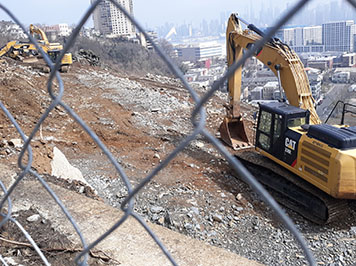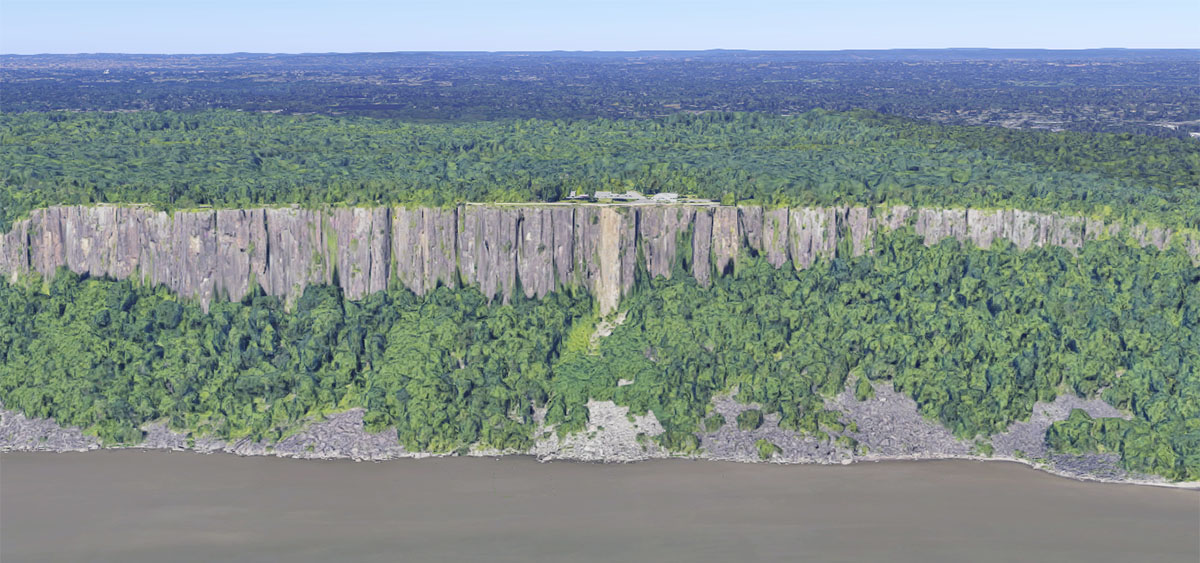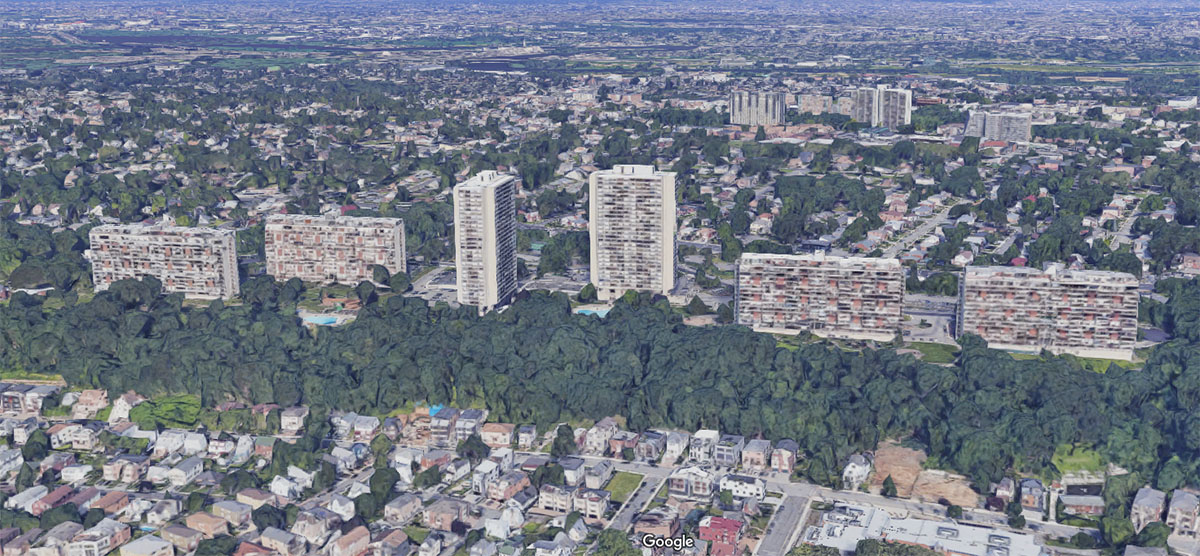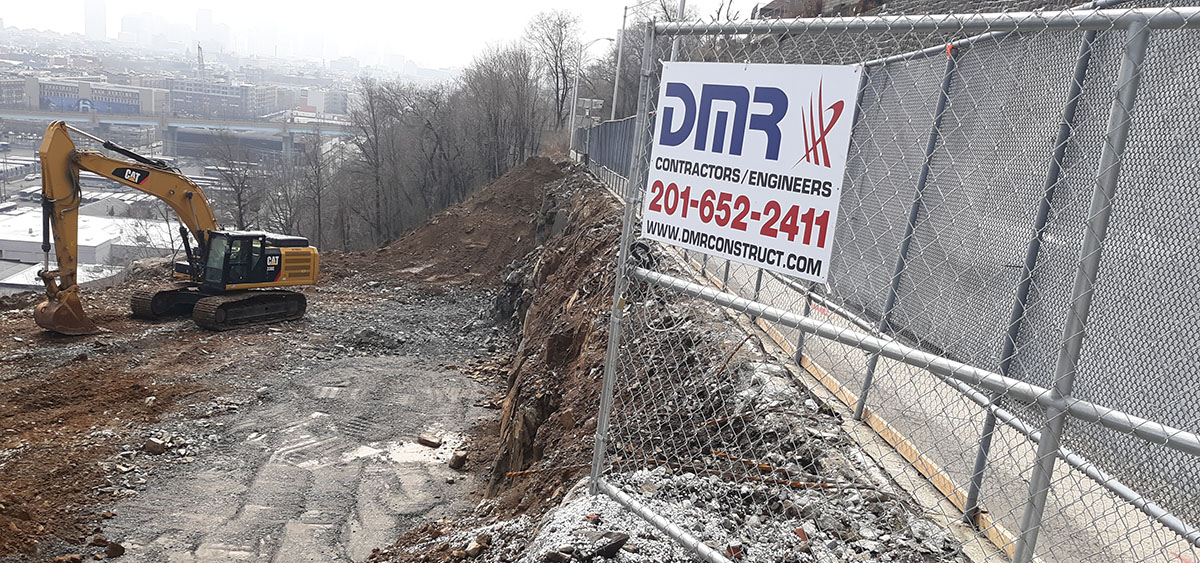Image 1: The Hudson River Palisades in Alpine, New Jersey.
Image 2: Highrise towers built atop the Palisades Cliffs in Fort Lee and Cliffside Park, New Jersey.
Image 3: The Hoboken Heights project under construction in Union City, New Jersey.
FBW | March 25, 2021
The Palisades Cliffs, facing the lower Hudson River, is our region’s most dramatic geological formation. The Palisades begin in Jersey City and span some twenty miles up to Nyack, New York. In Weehawken, the pillars of rock rise to 300 feet and gradually increase to 520 feet at the State Line Lookout just south of the New York-New Jersey border.
The earliest preservation efforts began in the late 1800s when groups, with the help of J. P. Morgan, closed down quarry operations in New Jersey. By 1900, the states of New York and New Jersey created the Palisades Interstate Park north of the George Washington Bridge which became a National Natural Landmark in 1983.
South of the Bridge, however, the Palisades has come under repeated assaults. One of the latest projects that is being built into the top edge of these cliffs is dubbed Hoboken Heights, an exclusive four-building, 55-unit luxury development currently under construction. Although the developers are apparently trying to cash in on the appeal of the Hoboken name, the 1300 Manhattan Avenue site is actually in Union City, New Jersey. The Hoboken Heights project is also being billed as an exclusive “gated community” set apart from its adjoining neighborhood.
Recently in North Bergen, part of the base of the Palisades was blasted away to make way for a commercial development that includes a Bank of America, a Walgreens and a Starbucks, all surrounded by surface parking. After blasting and hauling away truckloads of rock, the lower portion of the Palisades was covered with a faux-rock material.
The RPA’s (Regional Plan Association) 1929 Regional Plan called for the protection of land on top of the Palisades as “one of the most urgent and important needs in the Region.” Unfortunately, in the 1950s and 60s, New Jersey communities south of the George Washington Bridge, especially in Fort Lee and Cliffside Park allowed huge towers to be built lining the top of the Palisades. In response, the RPA dedicated a chapter of its 1960 Regional Plan to guidelines for protecting the Palisades and preventing this type of development.
National Natural Landmarks – Palisades of the Hudson is the best example of a thick diabase sill formation in the United States. Columnar jointing, an olivine zone and thermal metamorphic effects are attributes found in rare combination at this site. The glaciated crest provides impressive evidence of the Pleistocene glacier.
Some of the strongest advocates for protecting the Palisades were wealthy New York property owners on the eastern side of the Hudson River, who enjoyed spectacular views of the Palisades. The Palisades Interstate Park Commission describes part of its history, at the time the George Washington Bridge was being constructed, as follows:
The Commission had a strong — and at first, secret — ally in the person of John D. Rockefeller Jr., who began quietly to buy up as much of the property on the summit as he could. He would donate several hundred acres to the Commission in 1933, with the stipulation that the Commission use this land to build a scenic parkway from the new George Washington Bridge to the Bear Mountain Bridge — and that all man-made structures visible from across the river be removed.
The RPA has continued its efforts to protect the Palisades and has supported bills that have been introduced in the New Jersey Legislature. Yet, none of this proposed legislation has ever been adopted. In New Jersey, home rule, the right of municipalities to self-govern, including zoning and planning authority, often prevails over the interest of the state government to act on regional issues. The Palisades traverse nine different municipalities south of the George Washington Bridge.
Some Hudson River towns, however, have provided protection of the Palisades. In Jersey City, there is a steep slope ordinance that prohibits construction along the cliffs. In Weehawken and much of West New York, the top of the Palisades is a string of popular public parks, established a century ago, offering stunning views of the Hudson River and New York City skyline.





